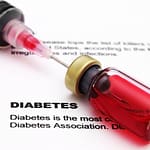The Possible Role of Mycobacterium avium subspeciesparatuberculosis (MAP) in Type 1 Diabetes

The initial cause of Type 1 Diabetes (T1D) is currently unknown. The mechanism of T1D is the destruction of the insulin-producing beta cells of the pancreas by the immune system. What causes the immune system to attack the beta cells initially has been the subject of much research and debate. Researchers have proposed a variety of theories, and there are certain risk factors that make the disease more likely in certain populations. However, the initial cause of T1D has been elusive.
The leading hypothesis is that T1D is a disease caused by genetic vulnerabilities combined with environmental factors, such as a pathogen, a chemical or even gluten. Recently, it has been shown that T1D patients have genetic vulnerabilities which may hinder the immune system’s ability to correctly recognize pathogens, predisposing them to mycobacterial infections. Additionally, some pathogens are able to trigger an immune response by cross-reactivity or molecular mimicry.
- Cross-reactivity occurs when an antibody created by one bacterial species attacks a similar bacterial species.
- Molecular mimicry is when an infectious agent, such as MAP, displays antigenic elements similar to something in the host. Due to this similarity, the infectious agent causes the immune system to respond by attacking the body’s own cells instead of the infectious agent.
Some researchers have hypothesized that MAP is the infectious agent that triggers T1D.
MAP is detected in a significantly higher percentage of T1D patients than in healthy controls. Additionally, exposure to cow’s milk early in life is a risk factor for T1D. One proposed mechanism for how MAP triggers T1D is that a protein in MAP (Hsp65) cross-reacts with the protein that is the target of the immune system in T1D (GAD 65). Hsp65 would normally be something that the immune system would attack, but GAD 65 is an enzyme produced by the pancreas. MAP tricks the immune system into thinking that GAD 65 is Hsp65, resulting in destruction of GAD 65 and the beta cells of the pancreas. Hsp65 and GAD 65 are similar in some respects. The ability of MAP to mimic a variety of protein targets at issue in T1D has also been found.
A short, simplistic analogy may help:
 Imagine your body has a beautiful orchestra inside it that only plays the right notes. One day, a travelling orchestra comes to visit and sneaks in the back door. They play a lot of the same songs that your body’s orchestra plays and they have similar uniforms, but some of the notes are wrong. Your body’s police force starts attacking them since they aren’t YOUR orchestra – and really, how many orchestras does a person need! But because they look and play similarly to your orchestra, the police force (which missed a few training sessions) gets confused and tries to destroy your own orchestra. Eventually, both orchestras are decimated, and only a few original orchestra members survive, hiding in the props closet. They dare not come out since their photos are plastered all over the body’s Most Wanted list. Your body realizes that it has no more beautiful music, and begins the dying process, since life cannot be sustained without music.
Imagine your body has a beautiful orchestra inside it that only plays the right notes. One day, a travelling orchestra comes to visit and sneaks in the back door. They play a lot of the same songs that your body’s orchestra plays and they have similar uniforms, but some of the notes are wrong. Your body’s police force starts attacking them since they aren’t YOUR orchestra – and really, how many orchestras does a person need! But because they look and play similarly to your orchestra, the police force (which missed a few training sessions) gets confused and tries to destroy your own orchestra. Eventually, both orchestras are decimated, and only a few original orchestra members survive, hiding in the props closet. They dare not come out since their photos are plastered all over the body’s Most Wanted list. Your body realizes that it has no more beautiful music, and begins the dying process, since life cannot be sustained without music.
In the story, the beta cells of the pancreas are your body’s orchestra and MAP is the neighboring orchestra. The genetically defective immune system is the untrained police force. And the music is the life-giving insulin.
Research on MAP and Type 1 Diabetes
 The strongest correlation between MAP and T1D is in the Sardinian population. Sardinia is an ideal area to study T1D since it has both a high incidence of T1D and MAP is epidemic in the sheep and cattle populations as well.
The strongest correlation between MAP and T1D is in the Sardinian population. Sardinia is an ideal area to study T1D since it has both a high incidence of T1D and MAP is epidemic in the sheep and cattle populations as well.
A dedicated group of researchers in Sardinia has consistently shown that MAP is found in a significantly higher percentage of T1D patients than in healthy controls. The presence of MAP DNA has been identified in 55.9-63% of T1D patients, as compared to 16-22.7% in healthy controls. Likewise, MAP antibodies have been found in 47.3-60.5% of T1D patients, but only 12.6-33.3% of healthy controls.
In a study of non-Sardinian patients, 12.1-50% of T1D patients were positive for MAP DNA vs. 0-4.5% of controls. Additionally, antibodies to MAP were found in 30.8-63% of T1D patients vs. 4.5-9.5% of healthy controls. There was no difference in the presence of MAP DNA or antibodies between patients who had just been diagnosed and those with long-term disease..
Researchers have also found that two-thirds of T1D patients who had received the BCG tuberculosis vaccine were also positive for MAP, which suggests that a cross-reaction between BCG and MAP may occur.
Another 2015 study suggests that the detection of the protein ZnT8 before the onset of T1D can predict disease. Investigators looked at 23 Sardinian children at risk for T1D from birth to age 10. A significantly higher number of children at risk for T1D were positive for MAP antibodies when compared to healthy controls, which correlated to the presence of ZnT8 and proinsulin (self) antibodies. During the study, three children developed T1D, two which had high levels of MAP, ZnT8 and proinsulin antibodies present prior to onset of disease. The researchers intend to continue the study to analyze whether antibody levels correlate to infant formula type.
For detailed descriptions and links to the research articles which discuss MAP in T1D, see the Type 1 Diabetes Core Research Pack.
BCG (Tuberculosis) Vaccine Reversing Long-Term Type 1 Diabetes
 The Faustman Lab at Massachusetts General Hospital has begun a Stage II trial to investigate the ability of the BCG vaccine to reverse long-term T1D. Led by Dr. Denise Faustman, an Associate Professor at Harvard Medical School, the current trial will enroll 150 patients. Positive results were reported from the Stage I trial in 2012.
The Faustman Lab at Massachusetts General Hospital has begun a Stage II trial to investigate the ability of the BCG vaccine to reverse long-term T1D. Led by Dr. Denise Faustman, an Associate Professor at Harvard Medical School, the current trial will enroll 150 patients. Positive results were reported from the Stage I trial in 2012.
The function of Regulator T-cells (Tregs) is to stop the immune system once a pathogen has been eliminated and to maintain immune tolerance. They distinguish between what is “self” and what is “foreign” in the body. These distinctions are critical for preventing autoimmune disease, which is when the immune system attacks the body’s own tissue thinking it is foreign. In T1D, the line between “self” and “foreign” gets blurred, and Tregs destroy the insulin producing beta cells of the pancreas thinking they are a foreign invader. Dr. Faustman’s research attempts to restore homeostatic balance to the immune network.
How may the BCG vaccine also help multiple sclerosis?
What Does This Have to do With MAP? The BCG vaccine is made with a non-disease causing form of Mycobacterium bovis. It provides some immunity against TB (a different mycobacterial species) by stimulating the body’s immune system to recognize mycobacteria as a threat. Later on, when the body is exposed to TB or another mycobacterial species, the immune system more easily recognizes the pathogen and destroys it before it produces disease. The BCG vaccine is 50-80% effective against tuberculosis, which varies by location. Studies have also indicated that it is 26-41% effective against Mycobacterium leprae, the pathogen which causes leprosy. This cross-reactivity between the BCG vaccine and mycobacterial species may apply to MAP as well, and could lend support to the theory that MAP is involved in the development of T1D.
 The Hygiene Hypothesis seeks to explain the rapidly increasing rate of allergies and immune diseases found in Western countries. It theorizes that the decreased exposure to microbes (both helpful and harmful) in early childhood suppresses the normal development of the immune system, leading to defects in immune tolerance. This “old friends theory” argues that it’s the lack of exposure to persistent and latent infections, such as TB, cholera and typhoid, that hinder the full development of the immune system. Animal studies support a conclusion that mycobacteria are important candidates in the hygiene hypothesis. Without early exposure to mycobacterial species, the innate immune system may not develop the ability to recognize and destroy them. Exposure to mycobacteria is also critical to the proper development and function of Tregs. A ubiquitous, and previously harmless, species like MAP could be viewed by the immune system as a pathogen per the Old Friends theory, and may trigger T1D and other immune conditions. Future research will shed more light on the exact role that MAP plays in T1D.
The Hygiene Hypothesis seeks to explain the rapidly increasing rate of allergies and immune diseases found in Western countries. It theorizes that the decreased exposure to microbes (both helpful and harmful) in early childhood suppresses the normal development of the immune system, leading to defects in immune tolerance. This “old friends theory” argues that it’s the lack of exposure to persistent and latent infections, such as TB, cholera and typhoid, that hinder the full development of the immune system. Animal studies support a conclusion that mycobacteria are important candidates in the hygiene hypothesis. Without early exposure to mycobacterial species, the innate immune system may not develop the ability to recognize and destroy them. Exposure to mycobacteria is also critical to the proper development and function of Tregs. A ubiquitous, and previously harmless, species like MAP could be viewed by the immune system as a pathogen per the Old Friends theory, and may trigger T1D and other immune conditions. Future research will shed more light on the exact role that MAP plays in T1D.
